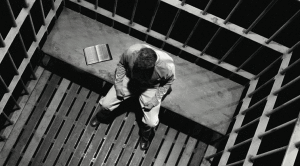 Brown University professor Daniel D’Amico has a staggering essay in the latest issue of Cato Unbound on the origins of mass incarceration in the U.S. titled “Why Nations Jail.” The common proposals for decreasing incarceration are “controls against racial bias, better social programs for the poor, drug decriminalization, and less punitive policing.” While D’Amico acknowledges that these elements matter, they do not account for global or historic patterns in prison growth. While economic factors like “unemployment, welfare spending, and union power correlate with cross-country imprisonment rates,” multiple studies fail to confirm a “consistent relationship between more liberal market economies – or higher economic performance – and larger prison populations.”[ref]He notes that more economically free countries actually have less homicide, yet have better crime reporting.[/ref] After continually demonstrating that the common narratives fall short when one examines the data, D’Amico offers a more compelling explanation: organizational structures of institutions. He uses the example of the American “war on drugs” to make his point:
Brown University professor Daniel D’Amico has a staggering essay in the latest issue of Cato Unbound on the origins of mass incarceration in the U.S. titled “Why Nations Jail.” The common proposals for decreasing incarceration are “controls against racial bias, better social programs for the poor, drug decriminalization, and less punitive policing.” While D’Amico acknowledges that these elements matter, they do not account for global or historic patterns in prison growth. While economic factors like “unemployment, welfare spending, and union power correlate with cross-country imprisonment rates,” multiple studies fail to confirm a “consistent relationship between more liberal market economies – or higher economic performance – and larger prison populations.”[ref]He notes that more economically free countries actually have less homicide, yet have better crime reporting.[/ref] After continually demonstrating that the common narratives fall short when one examines the data, D’Amico offers a more compelling explanation: organizational structures of institutions. He uses the example of the American “war on drugs” to make his point:
Most countries prohibit drugs, but only America launches an ominously but fittingly titled “war on drugs.” It is not so much that we prohibit drugs, but rather how we finance and manage that prohibition, which sets us apart. I believe that America’s drug war, American criminal justice services more generally in recent decades, and those criminal justice systems that have behaved similarly, are all united by how much more power they afford to the national as opposed to local levels in criminal justice decisionmaking. And the result is mass incarceration.
Theory shows that more hierarchical organizations commit more errors of overidentification. Increases in criminal legislation, arrest rates, convictions, and sentence lengths would all seem to be relevant manifestations. Similarly, many public choice scholars have noticed that by concentrating perceived deterrent benefits while dispersing costs, democratic politics rewards the expansive spending, employment, and voter appeasement accomplished through criminalization and prison growth.
As D’Amico continues, he provides evidence that heavily hierarchical institutions and centralized power lead to higher incarceration rates. For those in support of prison reform, this essay and the research behind it are important.